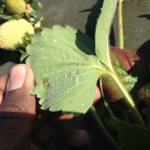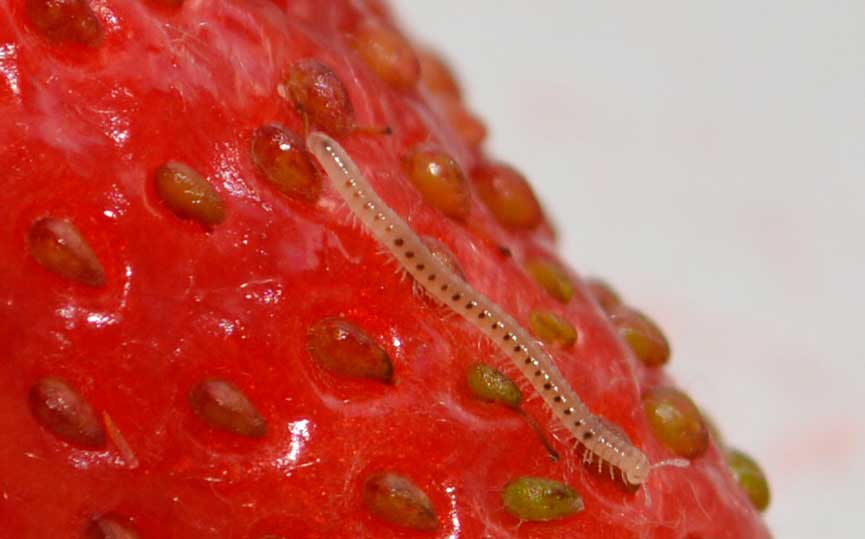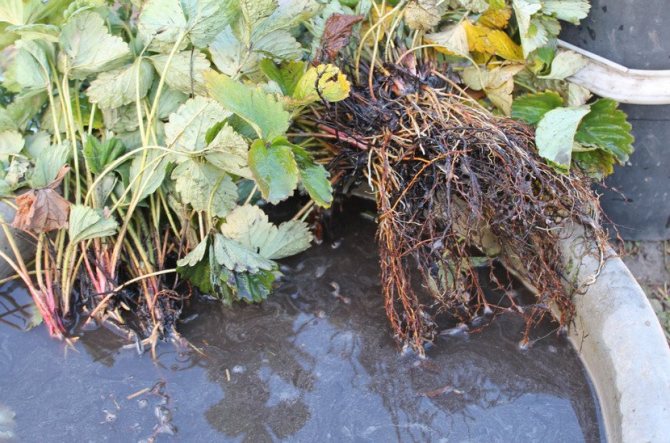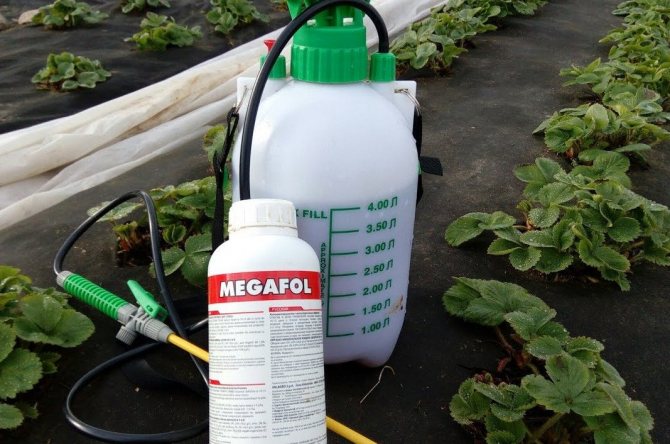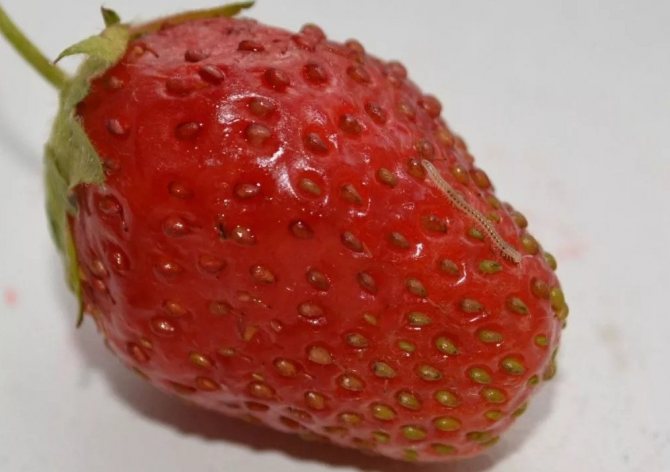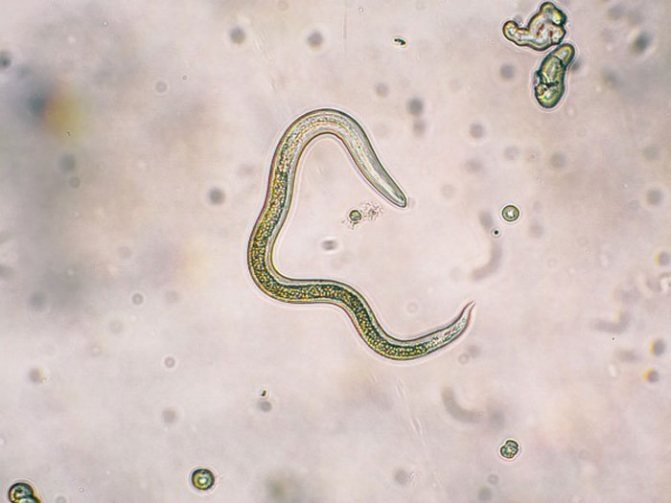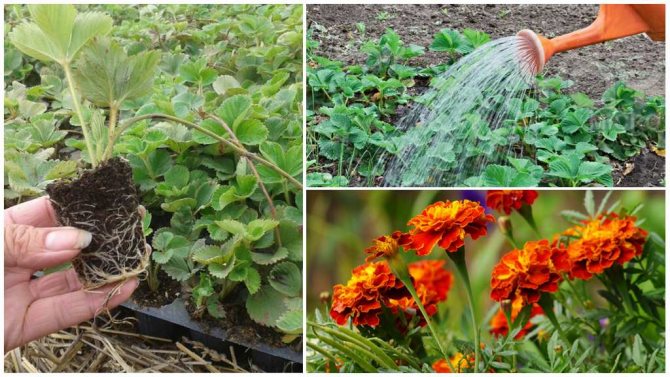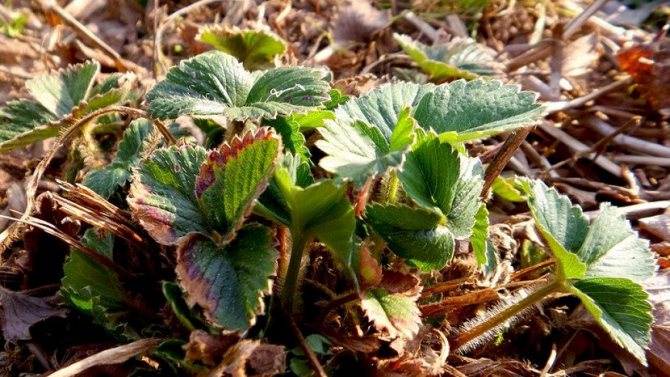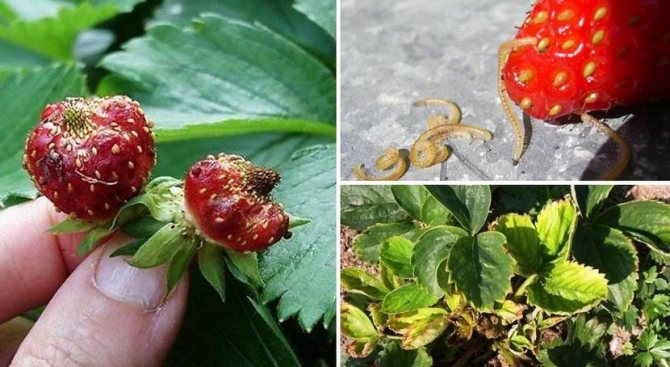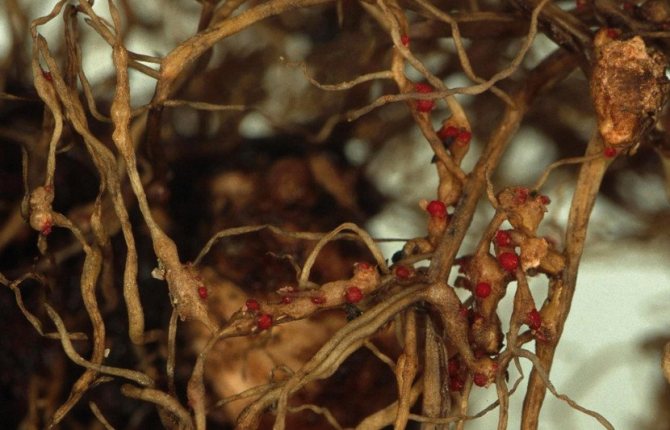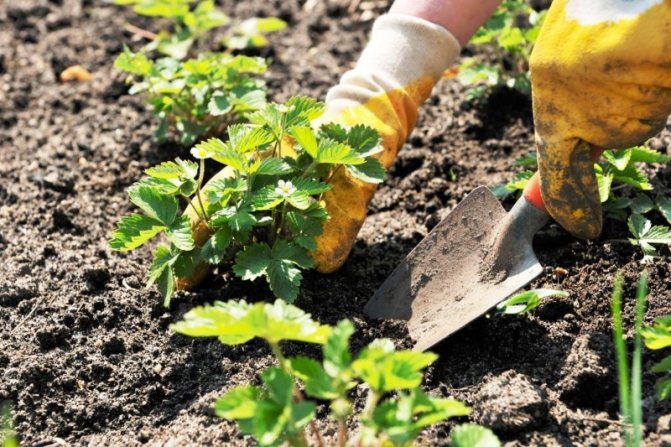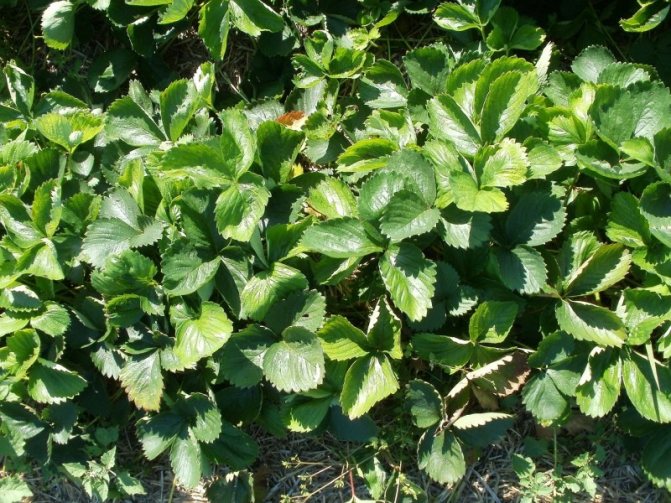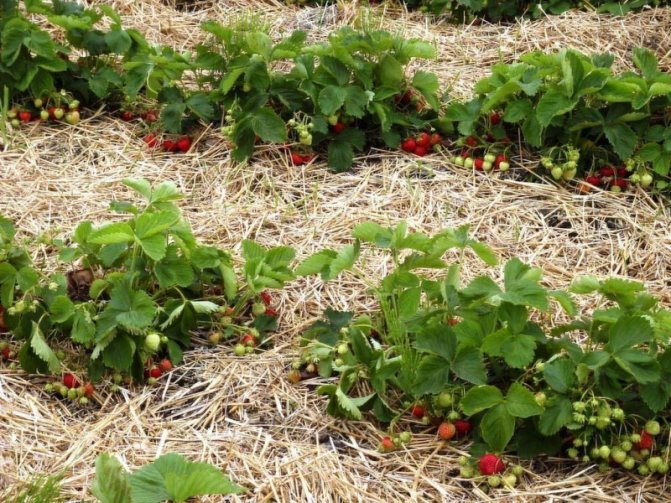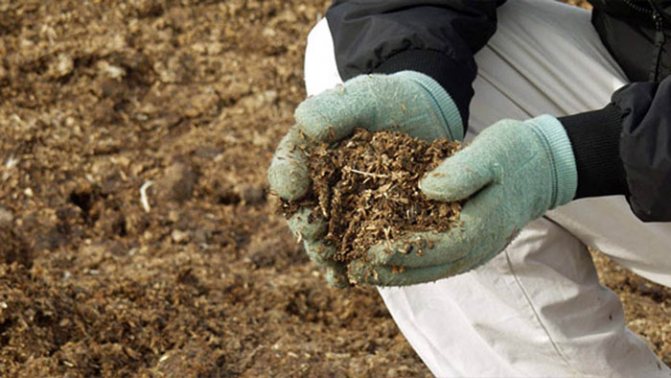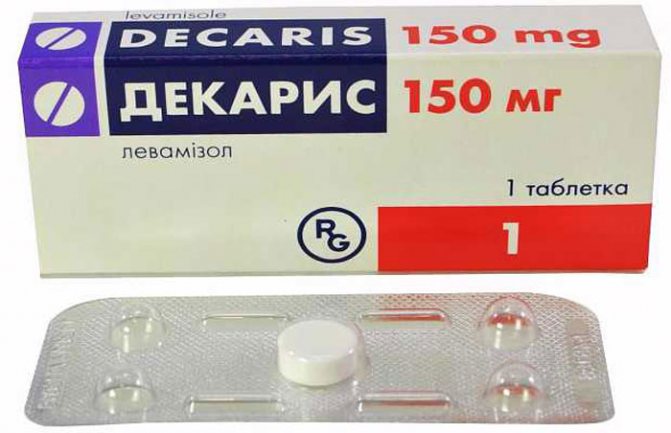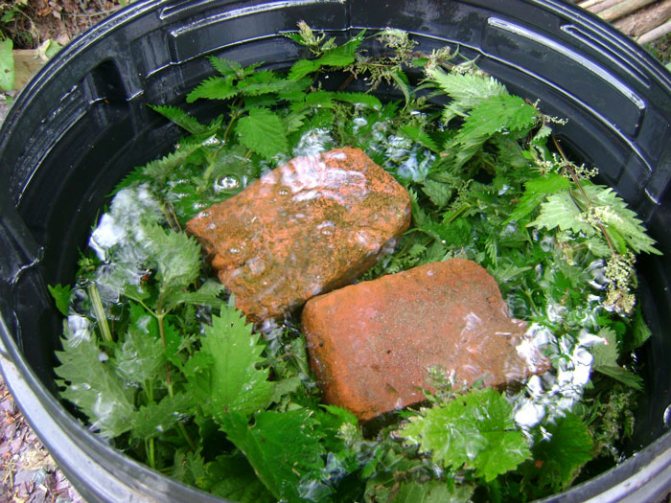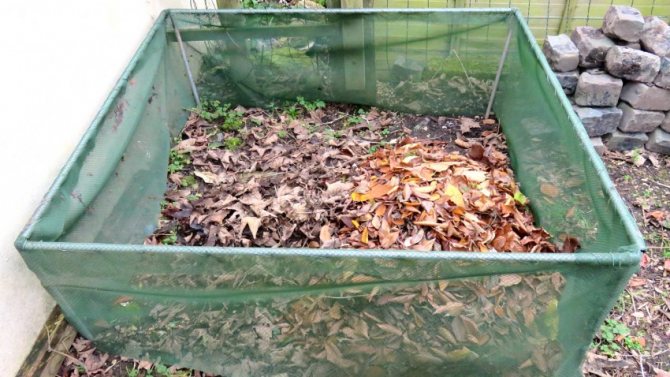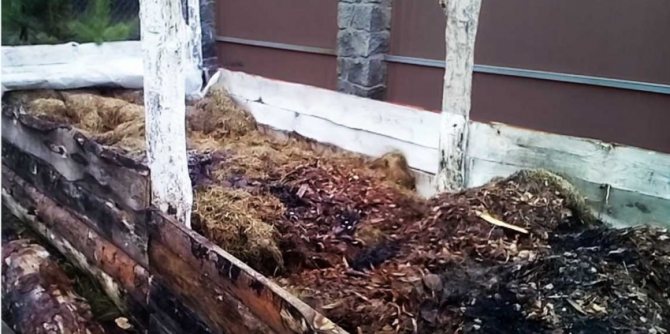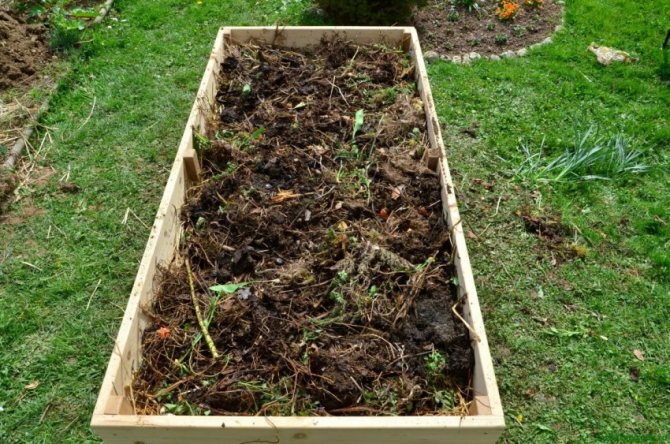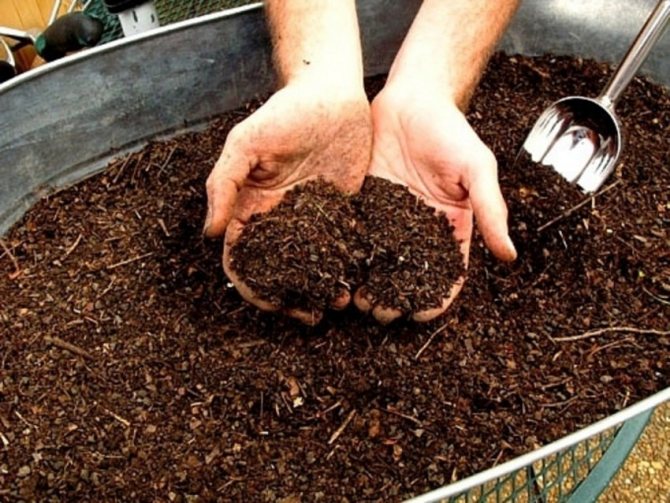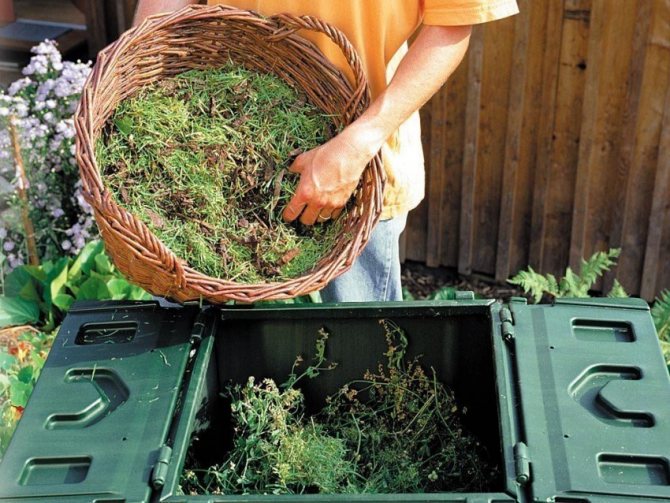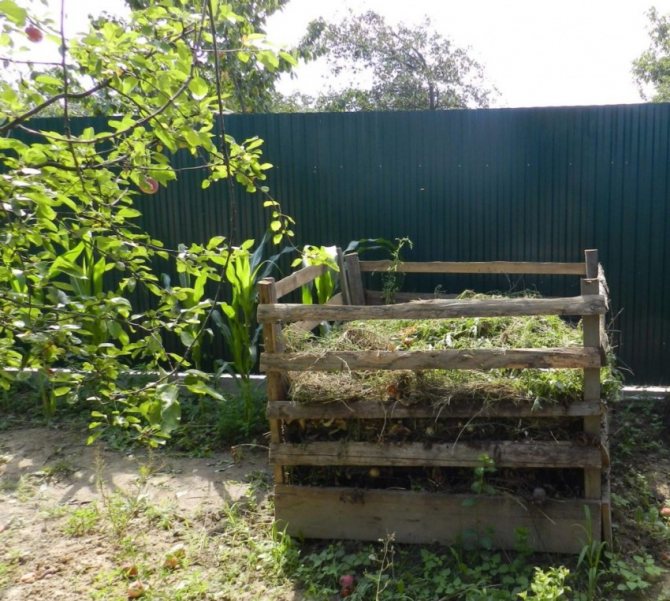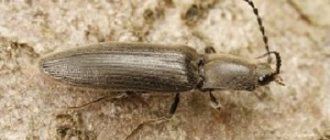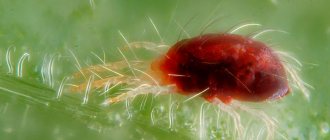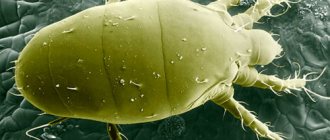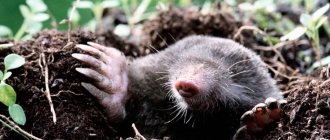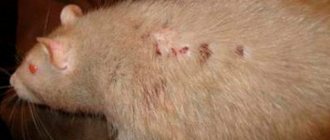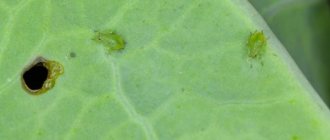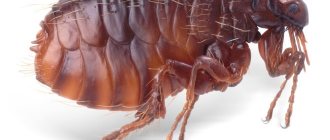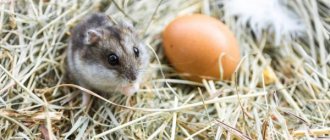The strawberry nematode or strawberry nematode is a microscopic worm that causes great harm to plants. Affected plants stop actively growing and wither away. In a neglected case, it leads to loss of yield. It is difficult to get rid of this problem completely. Timely prophylaxis can be the best way to control a nematode.
Dear Readers! For you, we have created communities in social networks, in which useful articles and interesting ideas are published several times a day! Subscribe and receive useful content in a convenient format!
Description of the pest
Nematodes are roundworms. They belong to the type Protostomes. Color from white to yellowish. The body is rounded, sharpened towards the end.
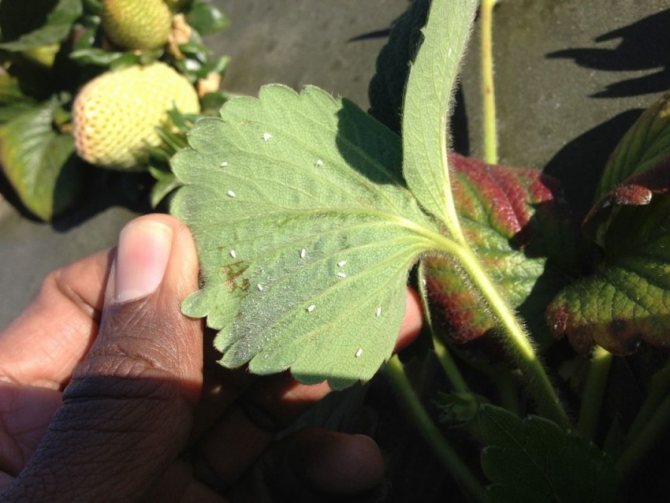
Males are up to 1mm long, thin as a thread. Females are smaller in length and more rounded because they carry eggs.
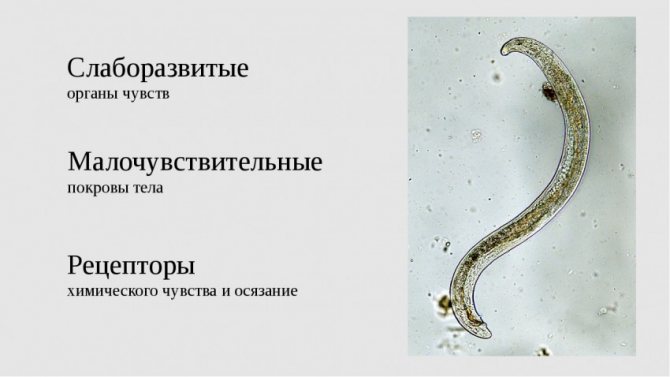

The oral cavity is armed with forceps. With the help of these tweezers, the parasite attaches itself to the roots or leaves, pierces the wall and injects a secret that digests the plant sap into a substance that is easily absorbed by the nematode.
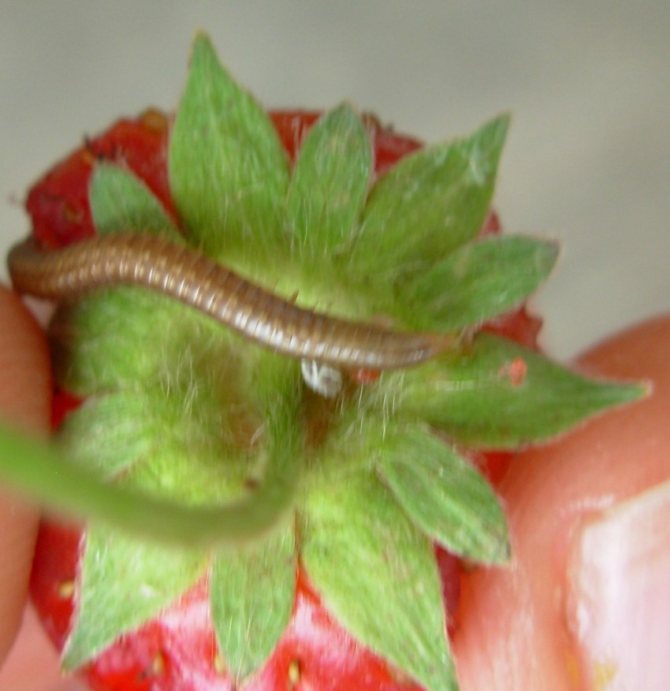

This type of parasite bears eggs in itself. If unfavorable conditions occur, the parasite forms a cyst (dense protective shell) around itself. One cyst can contain more than 1000 eggs that do not die for 10 years!


This is useful
It is important to remember that all means that are designed to destroy helminths and nematode worms act on all parasites (aphids, bugs, bugs). But not all parasite-killing drugs kill worms. It is not easy to remove the nematoda, therefore it is better to carry out all kinds of preventive measures.
If the worms settle on one bush, they will not completely destroy it, they will not move to another, so you need to immediately uproot the damaged plants in order to avoid massive nematosis infection.
And lastly, torn nematous bushes should not be thrown into the compost pit, because worms can live for a long time and at the same time contaminate fertilizers. The most effective way is to burn it away from the beds.
Strawberry nematode: pest description
Strawberry nematode In appearance, it is a small worm, almost transparent, about 2 mm long, although there are species over 8 meters living in the placenta of the sperm whale. Reproduction takes place by laying eggs in the ground. After emergence, the larva immediately invades the nearby plants and begins to feed on sap. For the entire period of her life, the female is able to lay more than 2 thousand eggs. Thus, the site can be infected in the shortest possible time.
Adult nematodes react more actively and faster to food, in contrast to young individuals. This speaks of the ability to self-study thanks to the nervous system and the senses.
The parasite infects almost all vegetable and berry crops, including onions and garlic with their specific taste and smell. If swelling is found on the roots, the plants need to be urgently rescued with the help of chemicals, and the affected specimens must be burned.
Strawberry nematode treatment: sequence of actions
Treatment of strawberry diseases caused by a nematode is carried out according to the following scheme:
- In the spring, we carry out an audit of the plantings, examining the bushes every week. In the same period, we add fertilizing containing potassium and organic matter.Wood ash shows good results in this case.
- During the entire growing season, we use effective microorganisms and process the plantings several times with growth stimulants ("Epin"), the action of which is aimed at strengthening the immunity of plants.
- We dig up all infected bushes and process them with hot water.
- After picking berries, we use chemical preparations.
- In the fall, we apply phosphorus-potassium fertilizers to the soil.
Types of nematodes
Among the varieties found on the site, the following can be distinguished:
- Stem. It causes the shoots to crack, after which the plant dries up and dies. Due to the violation of the supply of nutrients to the leaves and fruits, they have underdevelopment in the form of a corrugation, a decrease in size, and an irregular shape.
- Leafy. In this case, the leaves are covered with necrotic spots due to damage to the vessels through which the juices move. This is how a nematode looks like on a strawberry. It affects all parts of the plant, as it climbs through the root along the stem to the leaves. To understand the scale of the infection, you need to imagine that over 5000 individuals can live on one sheet at a time.
- Strawberry nematode. It affects mainly strawberries and tomatoes. It is very difficult to notice it with the naked eye, therefore summer residents do not always react decisively. Leaves suffer first, then berries.
- Root nematode. The largest of all parasites on the site. The female lays up to 1000 eggs in one galla, located on the roots of plants. As they grow older, individuals move into the ground and attack other crops. The root part, located below the gall, dies off, as the larvae damage the nervous system of the plant.
Anti-nematode chemicals
Since it is often quite difficult to deal with a nematode on strawberries, many gardeners turn to chemicals for help to achieve quick positive results. The most popular are:
- "Heterophos" - a working solution is prepared from 15 g of a substance dissolved in a bucket of water. Landings are processed at + 20 ° C. The seedlings can be soaked in the same liquid. Excavation work is carried out only one and a half months after using this tool.
Important! The drug "Heterophos" is highly toxic, and therefore it is allowed to work with it only in protective equipment: gloves, thick clothing and a respirator!
- "Phosphamtide" - for treatment use a 0.02% solution of the drug, carrying it out every 3-5 days.
- "Mercaptophos" - used similarly to "Phosphamtide";
- "Lindane", or "Ruskamin" - is used similarly to "Phosphamtide" and "Mercaptophos".
Strawberry nematode: symptoms of infection, harm
Strawberry nematode
The nematoda on strawberries can be seen by the state of the leaves and shoots:
- sheet plates of irregular shape, wrinkled. New leaves are much smaller in size, some of them develop into sharp outgrowths.
- the mustache is shortened, there are few flowers, the rosettes are deformed.
- leaf petioles gradually lose their pubescence. Spots of red or brown color, located between two veins.
- with a strong infection, the central leaves on the bush die off.
The nematoda causes significant damage to the yield of strawberries, as well as to nearby ornamental plants, so it must be dealt with by all available methods.
Traditional methods
If strawberries are affected by a small number of worms, then it is better to use not chemicals for processing, but folk remedies:
- Infusion of calendula. Pour a bucket of water (5 l) with 1 kg of chopped dry or fresh calendula, leave for 2 days. Strain, water the culture 2 times a month for prevention and 1 time a week for treatment, starting in spring. Can be used for spraying.
- Poisonous hogweed. The infusion of this plant should be prepared in protective clothing, gloves, and a mask.Pour 1 kg of hogweed with a bucket of water (10 l), leave for 24 hours. Use for spraying.
- Infusion of nettle. Pick up a whole bucket of plants, pour boiling water over, leave for 3-4 days. Treat strawberries that are infested with hookworms. According to gardeners' reviews, the infusion kills both adults and eggs.
Folk ways of dealing with a nematode
Marigolds against nematodes on strawberries
There are chemical and agrotechnical methods for dealing with nematodes on strawberries. Agrotechnical consists in removing diseased plants from the soil and destroying plantings. At the same time, the principle of crop rotation must be observed - do not grow strawberries in the same garden for the next 5 years.
It is advisable to buy planting material in trusted places so as not to bring the parasite to your site. An additional measure of control is the pre-planting preparation of seedlings - keeping the roots in hot water at a temperature of 47 degrees for 15 minutes. In this case, the larvae die.
Sowing winter cereals helps in the fall. After thorough cleaning of weeds and the remains of diseased strawberry bushes, the site is completely sown with cereals. As soon as they grow up to 15 - 20 cm, they are dug up from the ground. This allows you to saturate the soil with organic matter that works against the nematode. Digging brings the larvae to the surface, and they freeze in winter.
Marigolds are a plant that repels worms with their scent. To do this, they are planted, and after a while after germination, they are crushed and dug up with the soil. After the event, you need to wait a month before starting to plant new strawberry bushes. Do the same with calendula - marigolds.
According to the method of action, the planting of yellow mustard has a similar effect for several years, as well as leguminous green manures - peas, vetch.
Chemicals to combat
The nematode affects the tissues of strawberry bushes and in these places ideal conditions are created for the development of fungal, infectious diseases. Worms are constantly present in the soil, and it is completely unrealistic to get rid of them, but in small numbers, pests do not pose a great danger. When a lot of nematodes have accumulated, and you notice signs of their presence, you need to immediately start treating strawberries. The following chemicals give a quick positive result:
| Name | Structure | Effect | Dosage, method of administration | Benefits | disadvantages | Price in rubles |
| Heterophos | S-propyl-O-phenyl-O-ethylthiophosphate |
| Dissolve 15 g of the product in a bucket of water (10 l), process the plants at a temperature not lower than + 20 degrees | very efficient | highly toxic | |
| Phosphamide | emulsifier; organic solvent |
| Treatment is carried out with a 0.025-us solution of Phosphamide 1 time / 3-5 days during the growing season | has a long-term systemic and contact action | expensive | 542 for 1 l |
| Lindane | active ingredient - lindane |
| Sprinkle strawberries with 0.025 Lindane solution | gives a good result | toxic | Out of stock |
Chemical method
Chemical preparations for nematodes on strawberries are an effective, but not always safe method. To do this, it is necessary to spray or shed the soil on the infected area and treat the plants.
Safe, environmentally friendly chemicals are more expensive. They are used when the infection has just begun and there is a chance to save most of the bushes. Cheaper ones require additional protective measures for the respiratory system and skin. For example, methyl bromide gas is extremely dangerous, not to say fatal. They cultivate the soil, as a result of which most of the larvae die.
Some substances, for example, urea, are recommended to be mixed with the infusion of potato seedlings - 1 kg per 10 liters of water with the addition of 50 g of carbamide. This amount is enough for a hundred square meters of land.Urea effectively kills parasites, and the smell of potatoes stimulates the larvae to emerge from the eggs.
There are several ways to chemically combat nematodes on strawberries:
- embed in the soil, to a depth of 15 cm, "Carbation";
- spill soil. For this, "Aldikrb" is suitable, but its disadvantage is that it acts only on adults, so the treatment will have to be carried out several times. In addition, the drug is very toxic, belongs to the category of neuroparalytic agents;
- spray with Vidatom. Regardless of the place of introduction - roots or leaves - the drug is able to move in the tissues of strawberries and destroy pests.
"Bazudin" is a strong chemical drug that acts on roundworms in three directions: it causes a failure of the nervous and digestive systems, and also fixes itself in the surface layer of the coating, poisoning it from the inside.
Drugs
How to get rid of nematodes on strawberries using modern methods: agrochemists advise several drugs that are absolutely safe for humans, but work well against roundworms. First of all, this is "Nematofagin". The drug is based on the action of a predatory fungus. The mycelium produces a sticky liquid that attracts worms with its smell. By its structure, the mycelium looks like a three-dimensional grid. Having touched it, the larva or adult sticks, and the enzymes of the fungus begin to dissolve its body.
The drug is safe for birds, fish and insects, does not transfer to groundwater. On the site, it is used in an amount that depends on the number of pests - for 10 liters of water from 350 ml of working fluid.
The preparation "Fitoverm" is also practically safe for humans, therefore, instead of potent poisons, it is recommended to use it to destroy the nematode. The principle of action of "Fitoverma" is to make the functioning of the digestive system of the roundworm impossible, after which it dies of hunger.
How to handle correctly
Before getting rid of nematodes on strawberries, you need to know how to properly treat the soil with chemicals and environmentally friendly means to kill worms.
Herbal remedies such as marigolds, marigolds must be properly prepared for spraying. For this:
- cut the plants;
- crush them;
- poured with water - half a bucket of plant material is needed per bucket;
- insist 3 days;
- add 50 g of grated laundry soap and stir.
Next, strain the solution and spray the affected leaf plates on both sides with a spray bottle. The liquid can be used for dressing the roots before planting, as well as holding the bulbs of ornamental crops for 8 hours.
The soil can be treated with fresh manure, preferably poultry or pig manure. The more ammonia it contains, the faster the nematodes die. The disadvantage of the method is that after it you cannot plant plants on the site - they also will not survive in an ammonia environment.
Prophylaxis
So that you do not have to fight the nematode later, regularly take the following preventive measures:
- Choose nematode-resistant strawberries for planting. If you decide to purchase others, carefully examine the root system before buying for signs of damage.
- Treat the root system and soil with hot water before planting.
- Thin strawberry beds regularly, weed weeds.
- Water the strawberries no later than 6 pm to allow the leaves and soil to dry out. Worms love humid environments.
- Apply top dressing (organic, potassium) regularly.
- Transplant the culture to another place once every 4 years.
- Plant plants that emit phytoncides next to strawberry beds - calendula, marigolds, nasturtium.
- Immediately dig out heavily affected bushes together with a root ball and burn, and pour boiling water over the soil where they grew.
What does a nematode look like on a strawberry: description with photo
The presence of parasites at different stages of strawberry development is determined by the following symptoms:
- The beginning of the growth of strawberries starts around spring. In some regions with warm climates in late January - early February. If, at the same time, worms start in the garden, they infect the stems and leaves, which then turn yellow and curl. If you look closely, you can see a nematode or eggs on the back of the foliage with the naked eye.
- Next stage - peduncle , after which the flowering of the bushes begins. When exposed to parasites, the color of the plant changes. From green, the leaves turn brown or yellow, the flowers wither, the ovary does not form.
- After flowering begins growth and ripening phase ... If during this period parasites start, the fruits do not grow and do not turn red, but die green. Fruits can form slowly and incorrectly - crooked, shapeless.
It is difficult to detect nematodes due to their scanty size. To make sure of the presence of parasites on strawberries, you need to pull out the bush and carefully examine its root system. In the presence of a nematode on the roots of strawberries, white or yellow cysts, the size of a poppy seed, are visible (pictured):
Prevention of the appearance
It is easier to prevent the disease than to deal with a nematode on a strawberry later. Gardeners recommend the following prevention methods:
- purchase seedlings only from trusted suppliers in order to avoid contaminated planting material;
- before buying / planting, you need to carefully examine the root system, not the subject of cysts;
- before planting, it is recommended to treat the plants with warm water (not boiling water), at a temperature of + 30C, nematodes die;
- several times a season you need to compost the soil and feed the bushes in order to increase the protective functions of strawberries;
- in spring and autumn, it is imperative to remove all weeds from the garden and burn them in order to destroy possible parasites.
Strawberry seedlings
Description of the pest
Nematodes are roundworms. They belong to the type Protostomes. Color from white to yellowish. The body is rounded, sharpened towards the end.
Males are up to 1mm long, thin as a thread. Females are smaller in length and more rounded because they carry eggs. The oral cavity is armed with forceps. With the help of these tweezers, the parasite attaches itself to the roots or leaves, pierces the wall and injects a secret that digests the plant sap into a substance that is easily absorbed by the nematode.
This type of parasite bears eggs in itself. If unfavorable conditions occur, the parasite forms a cyst (dense protective shell) around itself. One cyst can contain more than 1000 eggs that do not die for 10 years!
What is the danger
The main danger of the nematode is that during the breeding season of the pest, you will not be able to notice it. The nematode will attack the soil and strawberries, and as a result, the harvest will deteriorate. And this is at best, because some gardeners are faced with a complete lack of berry harvest due to the fruitful work of this pest.
Of course, it is better to find and remove the nematode at the stage of its reproduction. Unfortunately, this is practically impossible. Although it will not be superfluous to adhere to some rules for a prudent gardener. Dig up a strawberry bush and carefully examine its roots. If they are affected by a nematode, then you may notice many cysts, which are similar in size and shape to a poppy seed, but are colored white. Also, an experienced gardener may see problems with the formation of roots: inhibited development of the root system signals the presence of a parasite. If the lesion is already very strong, then you can observe some metamorphosis of the leaves: they turn yellow, wrinkle, curl, the veins thicken, grow very slowly. Pay attention to the berries - they can take on an unusual shape.
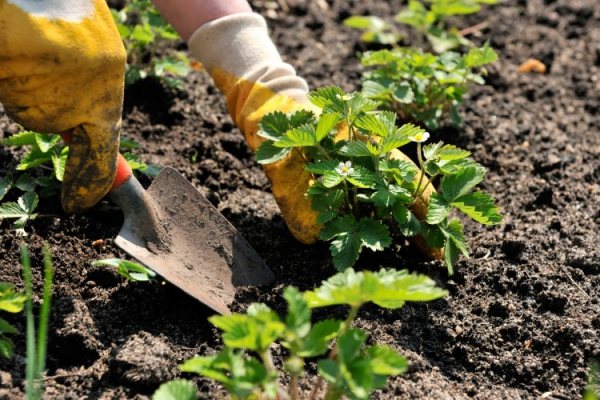

There are cases when a nematode affects one or a couple of bushes.As a result, after a while they dry up, and then die, which becomes the cause of the formations in the beds of "bald patches".
Infection symptoms
It is not possible to detect a nematode in the soil with a simple eye. Its presence can be guessed only when the plant is already affected.


To detect the source of threat to strawberries at an early stage, you need to dig up one bush and check the roots. If there is a pest, then you can see the following signs:
- poorly developed roots;
- on the roots there are white growths the size of a poppy seed. These are nematode cysts.
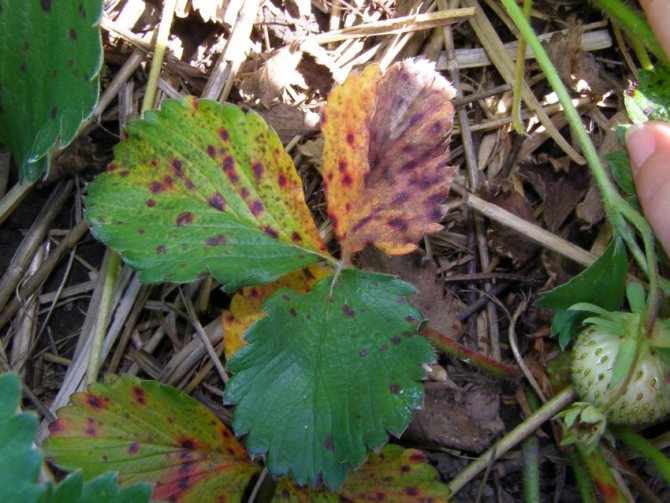

There is another way to find the parasite at the onset of the disease. To do this, finely chop the leaves and stems of strawberries and fill them with water for 10 hours. After this time, we consider a drop of water under a magnifying glass. If there is a nematode on strawberries, then you can see moving thin threads in the water.


With a strong infection, clear signs appear:
- plant growth slows down or completely stops;
- leaves turn yellow;
- lack or a small number of flowers;
- leaf veins are thickened;
- crooked short petioles;
- berries are small, oddly shaped;
- deformed ovaries;
- small twisted leaves;
- swelling on the leaves.
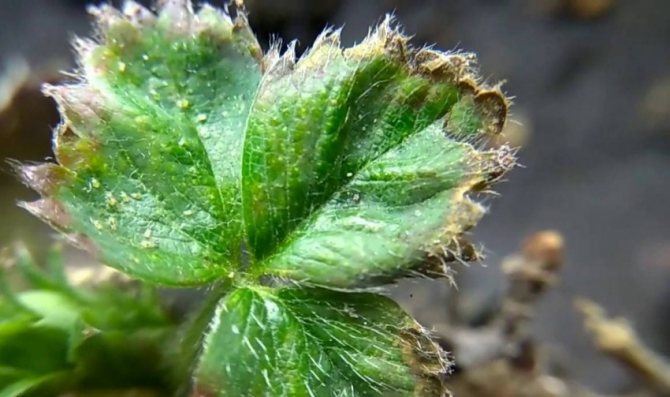

The worm, developing on the plant and feeding on its juice, violates the integrity of the tissues and weakens the bush. Strawberries and victoria can additionally become infected with viral and fungal diseases.
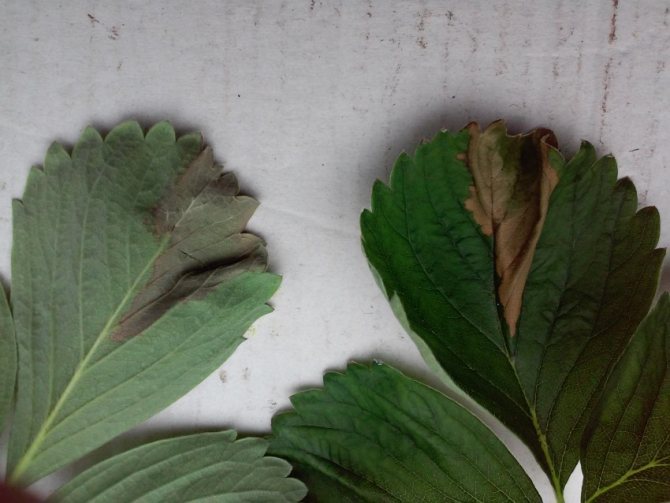

Therefore, treatment should be started immediately!
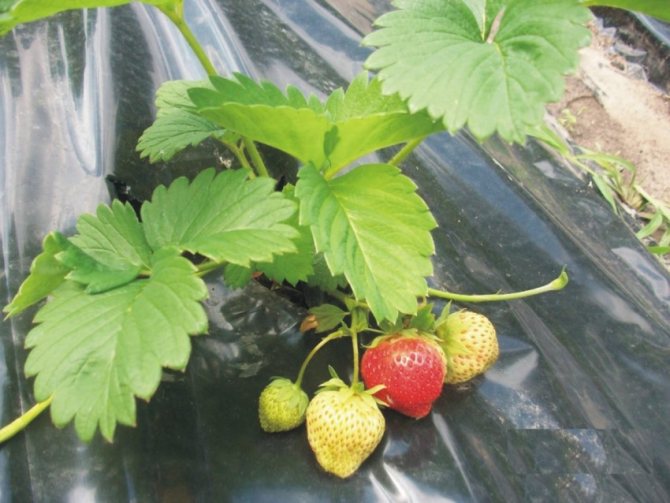

Reasons for the appearance
Malicious worms can get into your area in several ways:
- Purchase of infected seedlings. If you buy strawberry seedlings in unverified places (market, other summer residents), then there is a high probability of acquiring a garden crop with an extremely unpleasant "surprise";
- Neglecting prevention. Be sure to treat the roots with special chemical solutions or just warm water (but not boiling water!).
- Fertilize the soil with manure, this will nourish the bushes and increase their resistance to infection.
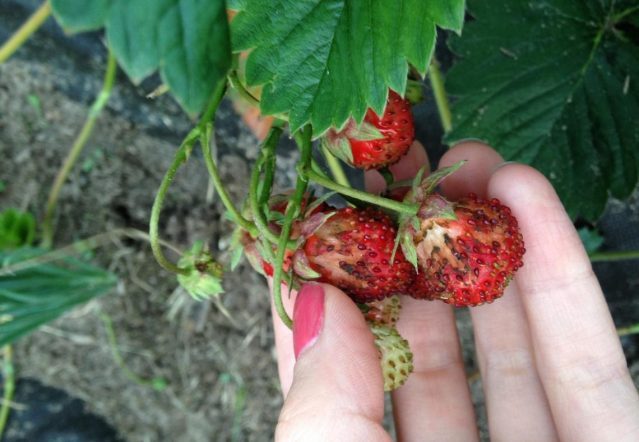

When a nematode appears, the strawberry bush begins to ache
Nematode control options
It is unlikely that it will be possible to completely get rid of the parasite in a short time. To protect berry bushes from damage, the main thing is to reduce the number of pest eggs. According to scientists, a nematode is not dangerous to plants if its number does not exceed 1000 per 100 m3.
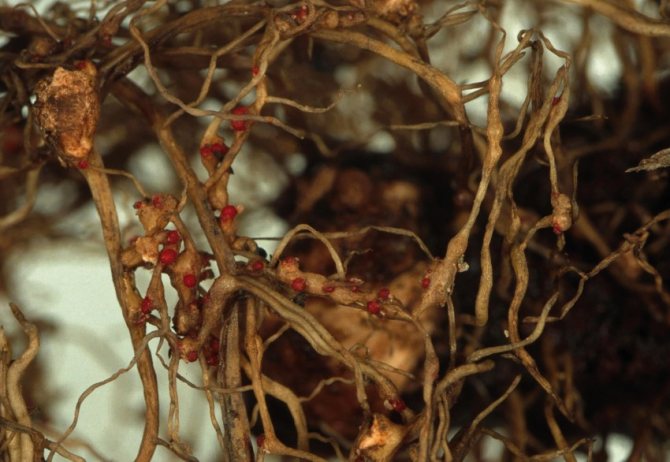

There are several methods of dealing with the disease:
- Agronomic (digging, improving soil quality, replanting to a new place).
- Mechanical (root treatment with hot water).
- Chemical.
- Biological (planting nematode "enemies" next to strawberries).
- Folk methods (herbal infusions).
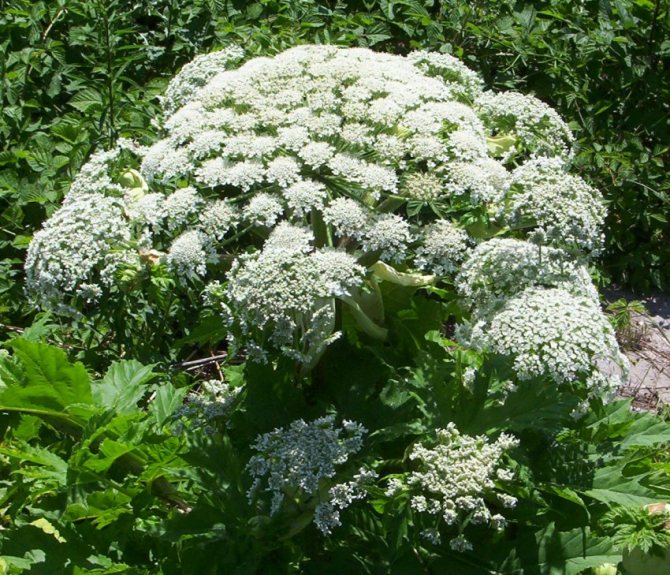

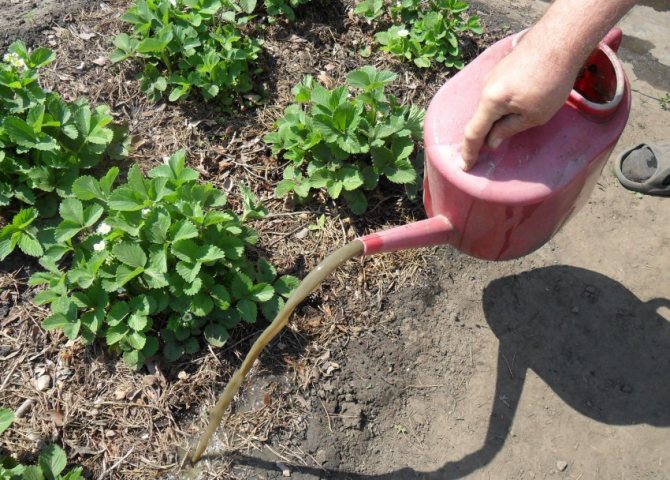

How to use potassium humate for strawberries: using fertilizer for the garden and vegetable garden. Composition, instructions for use and methods of introduction (115 photos + video)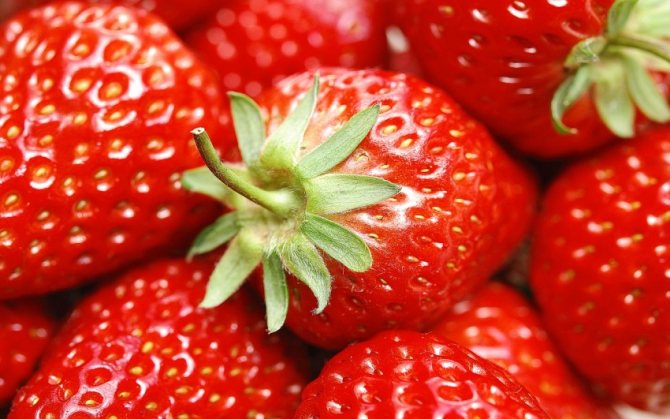

Strawberry Roxana - 85 photos, description, reviews, planting and growing a fruitful variety
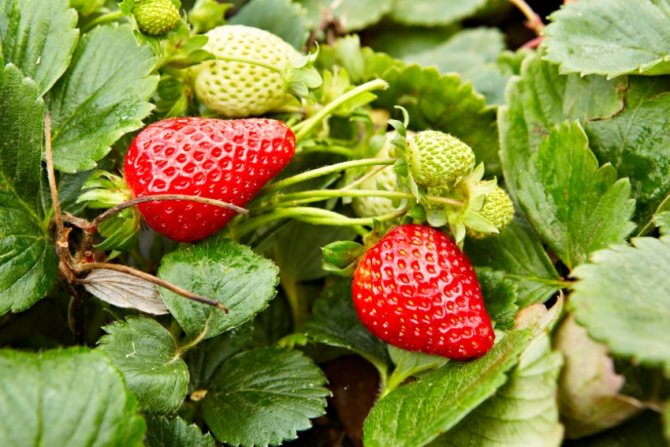

Strawberry albion: a detailed description of the variety, rules of care and breeding options for strawberries
Asking the question "how to get rid of nematodes on strawberries?" at first it is better to choose more gentle methods.
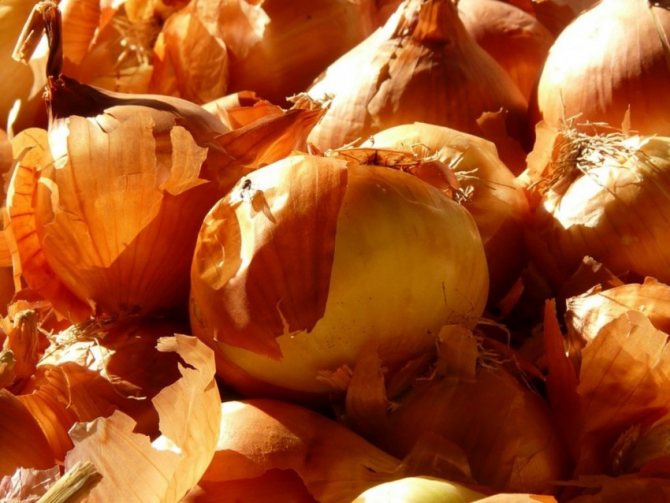

Strawberry defeat
The most favorable time for nematode development is May - early June. Just this time coincides with the period of flowering and the formation of ovaries on strawberries. It is clear that the emerging parasite is able to weaken the bushes, lead to the crushing of the fruit and disfigure them, and worsen the taste.
The best prevention against this dangerous parasite is to choose resistant varieties that are not attacked by worms.
How to identify contamination on strawberries
Since these worms are very small and it is extremely difficult to determine their presence, you should know some indirect signs of the presence of the parasite:
- Swelling appears on the stems and leaf veins;
- The stems are curved and shortened;
- The leaf plates wrinkle and then dry out;
- The resulting berries are small and deformed;
- On the upper side of the leaf plates, swelling-galls are noticeable.
The development of plants almost stops, the bushes look like flattened. The infection spreads from already affected plants to healthy ones. Therefore, when buying seedlings, you should carefully examine the earthen lump.
If tiny light crumbs that look like semolina are found in it, then it is safe to say that these are female hookworm worms with eggs.


The result of the activity of the parasite
Various species of this parasite live in the earth. But the tangible harm from their vital activity becomes noticeable only when a large number of parasites accumulate around the bushes.
- Firmly adhering to the stems and leaves, the parasites exsanguinate the plants, feeding on the sap. At the same time, the worms release special chemical agents that penetrate the stems and leaves, making them more acceptable as food for the nematode.
- A weakened plant becomes completely defenseless and easily vulnerable to a variety of diseases and infections. In addition, the parasites themselves often carry viruses and various fungi.
- Nematode worms become especially dangerous when their number begins to exceed 1000 individuals per square. This can happen quite quickly, as females of this parasite lay up to 2000 eggs at a time.
It looks like a root nematode lesion on a strawberry
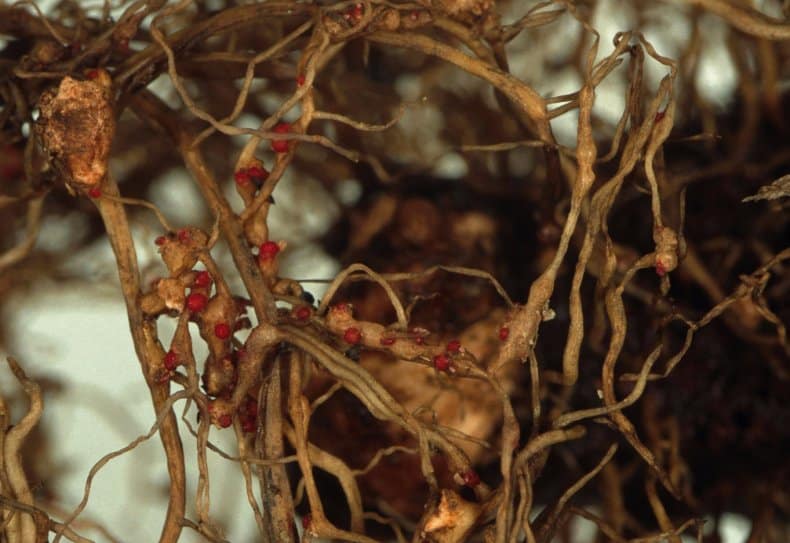

Mechanical restoration
It is used for both treatment and prevention of the disease. Sick Victoria bushes are dug out, washed well with running water from the ground. Put in a container with water, the temperature of which is 40-55 ° C for 5-20 minutes. We choose the water temperature and time depending on the degree of damage to the bush. So, adult worms die even at 40 ° C rather quickly.
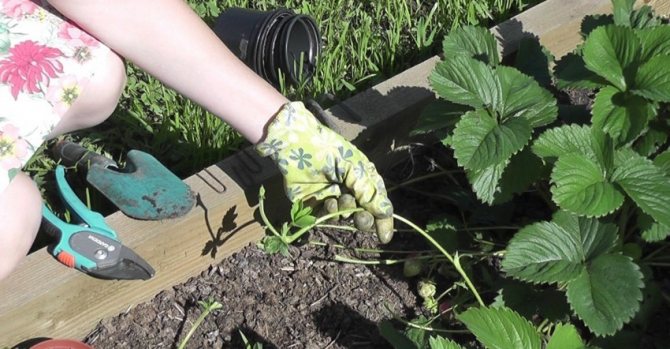

Eggs hidden in a cyst are more resistant to temperatures. Therefore, roots affected by nematode eggs must be kept at 55 ° C for a maximum time.


With this method, you need to be careful not to make the water too hot, otherwise you can boil the bush, and not cure it.
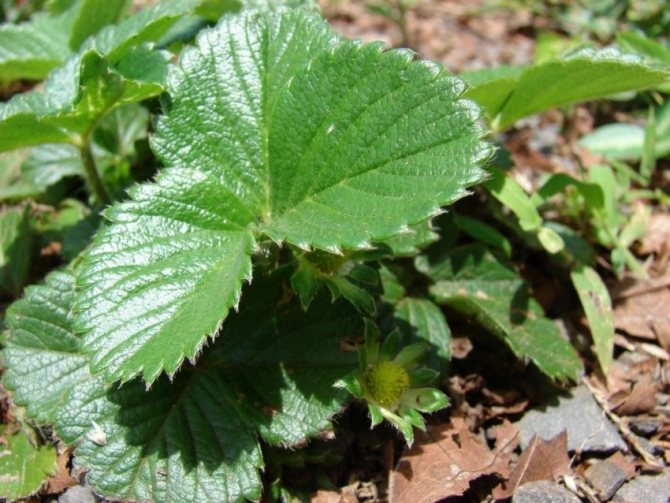

Gardeners reviews
imers
For the prevention of root nematodes, it is recommended to add "Bazudin" mixed with sand to the root zone when planting. I believe in the effectiveness of "Bazudin" precisely for prevention, but only partially: eggs of nematodes are usually quite well protected from everything.
Miss Violet
There are no drugs to combat the nematode. More precisely, they exist, but they are so toxic to humans that they are prohibited for use at home. In addition, these drugs only work on adults.
Chemicals
If the nematode damage is very strong and folk remedies did not help, chemicals are used:
- Heterophos - dissolve 15 g of the drug in 10 liters of water. The solution is used to treat the infected soil and seedlings. The drug is poisonous, therefore, when working with it, you need to wear rubber gloves and a respirator.
- Phosphamide - 0.05% solution watered bushes 1 time in 5 days.
- Copper sulphate - used to treat bushes in the spring.
- Speed - used after harvesting to destroy the larvae.
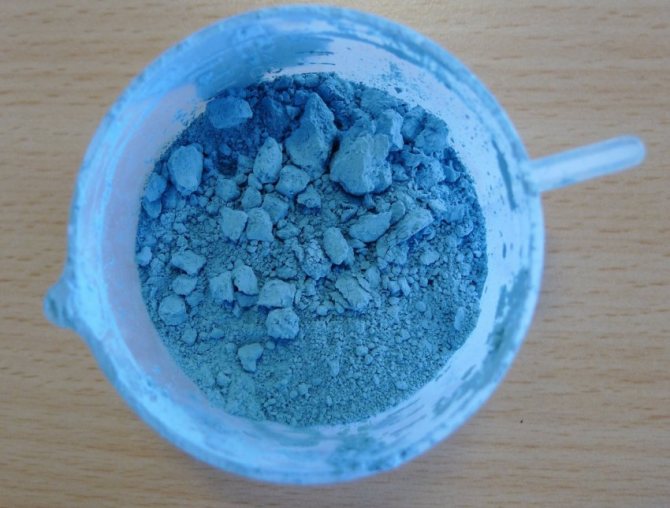

Which way to choose
When strawberry bushes are infected with a nematode, it should be remembered that even the use of strong chemicals does not give complete confidence in the destruction of the parasite. In addition, especially novice gardeners should not get carried away with chemistry and it is better to try not to use it, or only in extreme and critical cases of infection. Experienced gardeners have much more experience in using such methods. It will be preferable for both to use numerous folk remedies and to carry out prevention.
Applying control methods and watering correctly, as well as feeding strawberries on time, it is possible to completely prevent the invasion of the pest. But nevertheless, if this did not succeed, the necessary measures are urgently applied, then the strawberry harvest will be saved.
Agronomic
We add compost to the soil. It improves the quality of the soil. Promotes the development of beneficial fungi, which are completely safe for plants and humans, but destructive for roundworms.
Do not plant onions, nightshades and peas next to strawberries. On the soil next to these crops, the nematode develops well.
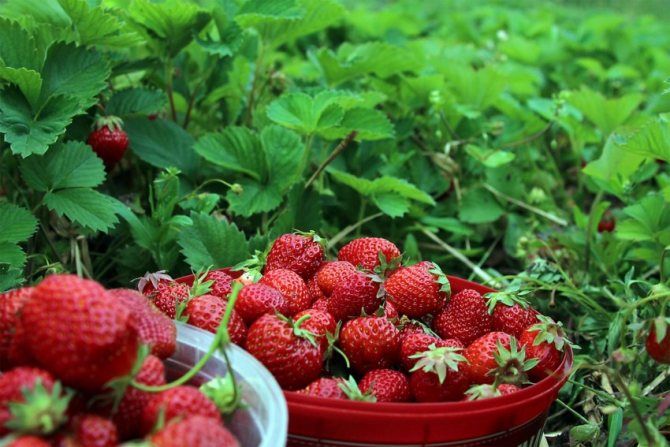

Prevention
To avoid contamination of berry crops with a nematode, several rules should be followed:
- Choose quality seedlings. Check the seedling root system for cysts before purchasing.
- Before planting, keep all the bushes in hot water.
- Transplant strawberries to a new location every 5 years.
- Fertilize the beds with compost in the spring and periodically during the summer.
- Plant plants that are dangerous to nematodes next to strawberries.
- Thin your strawberries.
- Weed more often and remove diseased plants.
- Choose disease-resistant Victoria varieties: Raketa, Granddaughter, Festivalnaya.


How to handle correctly, step by step instructions
In order for the treatment to be effective and to give a result, it should be performed according to a certain scheme:
- In the spring, a thorough revision of the entire strawberry area is important. It is necessary to inspect the bushes weekly. At this time, organic fertilizing with potassium is introduced. It is good to use wood ash.
- During the growing season, treatment with growth stimulants is required. The drug "Epin" has proven itself very well. Its additional action is to strengthen the immunity of strawberries.
- If infected bushes are found, they should be immediately dug up and thoroughly rinsed with hot water rhizomes.
- After the end of fruiting, chemical treatment is necessary.
- In the fall, the season ends with the application of phosphate-potassium fertilizers.
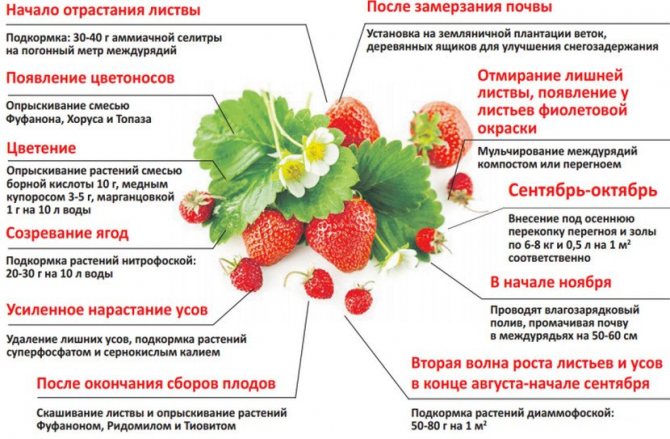

Also, the most common mistake gardeners make is the use of insecticides to kill nematodes. However, drugs in this group act exclusively on insects and do not affect worms at all.
Important! Affected plants that cannot be recovered should not be disposed of in compost. Nematodes do not die, but, on the contrary, infect fertilizers.

